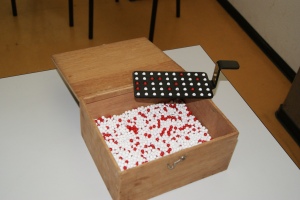Deming Uncovered: Beyond the Red Beads
Deming Uncovered: Beyond the Red Beads
Forget about blaming employees for every hiccup in the workplace; chances are, it’s not them—it’s the system (the way the work works). Enter Bill Deming, the overlooked genius who showed us where the real problem lies.
Who Was Bill Deming?
Bill Deming, formally known as W. Edwards Deming, was a statistician, professor, author, lecturer, and consultant. He’s particularly famous in Japan for teaching the country’s top management how to improve product quality. While highly influential in certain professional circles, he remains relatively unknown to the world of business, let alone to the general public.
What’s Deming’s 95/5 Rule?
The 95/5 rule proposes that 95% of the problems in an organisation are a consequence of the system, while only 5% are a consequence of the people within it. This revolutionary thought refocuses attention from blaming individual workers to considering the system they operate within.
The Red Bead Experiment?
The Red Bead Experiment was a powerful illustration of the 95/5 rule. In this experiment, workers would scoop beads from a bowl filled with a mix of white and red beads. Despite their best efforts, they couldn’t avoid scooping up red beads, which were considered ‘defects’. The point? The workers had no control over the system, represented by the bowl and the mix of beads. The defects were a consequence of the system, not the people.
Why Isn’t Deming More Famous?
Deming’s lack of mainstream recognition can be attributed to a few factors:
- Cultural Differences: Deming’s principles took root in Japan, not his home country of the United States.
- Complex Ideas: His theories aren’t beginner-friendly and demand a paradigm shift in managerial thinking.
- Crowded Thought Space: Newer methods and more contemporary “thought leaders” often take the limelight.
- Systemic Focus: His emphasis on systems over individuals is somewhat at odds with endemic Western management assumptions and beliefs.
Why Take Notice?
Understanding Deming’s 95/5 rule can significantly alter how you approach problem-solving in your organisation. It places importance on changing systems, not just people, to solve persistent issues.
How to Implement the 95/5 Rule?
- Examine Systems, Not People: Before jumping to blame individuals, look at the systems in which they operate.
- Prioritise Systemic Solutions: Focus on fixing the system rather than tackling individual performance issues.
- Educate the Workforce: Ensure your team understands their role within the broader system and the shared responsibility for improvement.
- Assess and Refine: After systemic changes, evaluate their effectiveness to ensure they resolve the problems you identified.
In Summary
Bill Deming and his 95/5 rule, illuminated through the Red Bead Experiment, offer a critical lens for assessing organisational issues. It’s not merely about identifying what’s wrong but understanding where the root cause lies—usually in the system rather than individual actions. Isn’t it time we acknowledged the value of this overlooked genius?

